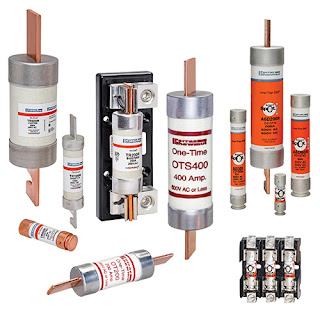New Generation Laser Sensor Increases Quality & Speed of Welding
A new laser sensor has been launched by British
manufacturer, Meta Vision Systems, for all types of mechanised and
robotic welding. It is the first such sensor to incorporate high
performance image processing in the sensor head itself, rather than
needing a separate computer, and has many applications throughout
manufacturing industry.
Installing the new Smart Laser Sensor (SLS) at
least halves the cost of automating arc welding equipment and robot
welders, compared with using conventional laser sensors. The cost can be
a small fraction of the previous outlay if the welding equipment has an
Ethernet or CANbus interface, allowing direct connection of the SLS.
Other functions of the SLS, in addition to seam
tracking during welding, include inspection of the bevel on pipe ends
before welding, and of the weld bead after it is laid. All three
processes were demonstrated on the Meta stand at the show, with tracking
position detection and measuring accuracy to within ± 0.1 mm .
The sensor was developed by Meta in collaboration with CRC-Evans Pipeline International, Inc. of Houston, USA, the world leader in pipeline welding. The company, a co-exhibitor on the Meta stand at the show, is the launch customer for the product and has worldwide exclusivity for its use in pipelines. The version of the SLS for pipeline welding and inspection is called “CiRCvision ”. Meta will be servicing demand for the sensor in all markets other than pipeline .
The sensor was developed by Meta in collaboration with CRC-Evans Pipeline International, Inc. of Houston, USA, the world leader in pipeline welding. The company, a co-exhibitor on the Meta stand at the show, is the launch customer for the product and has worldwide exclusivity for its use in pipelines. The version of the SLS for pipeline welding and inspection is called “CiRCvision ”. Meta will be servicing demand for the sensor in all markets other than pipeline .
Off-the-shelf laser systems are capable of high-speed
joint tracking, but have limitations regarding unit cost, robustness,
ease of use and suitability for typical pipeline construction field
conditions. These limitations made previous generation systems
unsuitable for general use with the large CRC-Evans welder fleet. The company's brief to Meta was to create a
low-cost, self contained, intelligent, smart vision system with digital
communication capabilities to be used in enhancing weld joining
applications at 3m/min or better and also for inspection of pipelines .
CRC-Evans identified that the overall pipe joining process could be
dramatically improved if additional information about weld preparations
and welds could be obtained before, during and after welding.
The result is the Meta SLS, which consists of a
robust CMOS megapixel image sensor with very large scale integration
devices, including a large FPGA ( field-programmable gate array) and a
powerful DSP (digital signal processor) inside the sensor head itself.
The nature of narrow gap welding in pipelines makes it
impossible to have precise alignment all around a given weld joint due
to irregularities in joint fit-up as a result of variations in pipe
diameter and ovality. This leads to local changes in joint geometry and
position. The SLS measures these changes in real time during
welding. Tracking data is sent via a high-speed Ethernet or CANbus
interface to the motion control system driving the external welding
system. The resulting closed loop control ensures reliable, noise-free
data transmission, ensuring that the welding electrodes are always where
they should be.
The tracking algorithms vary with the type of weld
pass. For example, during root welds, the laser vision system provides
accurate tracking without the need to oscillate that is a requirement of
through-arc tracking. This results in more accurate bead placement and
better weld penetration. Experiments have shown that the high resolution
of the SLS makes it possible to use laser tracking for all stages of
the welding process, including capping.
Since the laser sensor works in 3D, effectively taking
slices through the weld joint, it is able to compute accurately the weld
volume in real time, allowing adaptive control over key welding
parameters. The combination of accurate seam tracking
appropriate for the pass being welded, together with adaptive fill based
on actual measured joint volumes, makes it possible to achieve
consistent, high quality welds at higher speeds than would otherwise be
possible
One of the keys to efficient pipeline welding is for the
line crew to be able to bevel pipe ends consistently, accurately and
quickly despite variations in pipe end diameter and ovality. As the SLS is basically an instrument for
measuring 3D profiles, it can also be used to inspect bevel geometry.
This identifies any problems while the bevelling machine is still in
position, enabling rapid rectification. All features such as root face
(land) thickness, bevel angle, offset and root angle can be measured and
compared against a desired template.
Using SLS , the root weld – the most critical
phase of pipe joining – may be similarly inspected after it has been
laid. If a faulty root bead is welded over and the defect not discovered
until later, the cost of repair becomes high, so potential savings are
large. Inspecting the shape of the root weld also gives
an additional method of inspecting critical fatigue applications, such
as risers, by measuring weld shape parameters such as mismatch and bead
concavity.


Comments